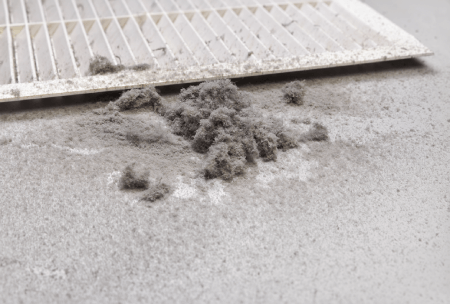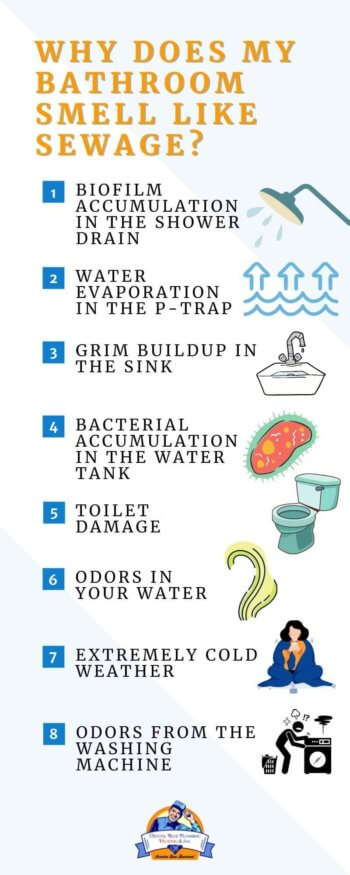What Are the Most Common Indoor Air Pollutants?
Pollutants inside a building can be up to three or four times the pollutants in outdoor air. Pollution can be harmful to human health and may even damage valuables in your home. It is, therefore, crucial to monitor for signs of poor indoor air quality. Here are some of the common contaminants that could be a hazard in your home.
1. VOCs (Volatile Organic Compounds)
The concentration of VOCs indoors can be up to 10 times higher than the outdoors. That is partly because they come mainly from household products such as perfume, carpets, varnishes, and solvents. There are numerous other items in your home that could be emitting VOCs.
Common household sources of VOCs:
- Air fresheners and aerosol sprays
- Paint and vanishes
- Automotive oils and products
- Disinfectants and cleansers
- Pesticides
VOCs can be hazardous in your home due to the adverse health effects they can cause. The intensity of the toxin’s effect will depend on the type of contaminant and the duration of exposure. So it is wise to address the indoor air quality concerns promptly as soon as you detect VOCs.
Some symptoms will be apparent immediately after exposure. Such symptoms include eye and nose irritation, migraines, visual impairment, dizziness, and memory problems. Other signs you may experience include fatigue, nausea, rashes due to allergic reactions, among others.
2. Secondhand Smoke Primarily From Tobacco Products
Smoke from tobacco products has more than 5,000 individual compounds, with 69 being carcinogenic. As such, smoke has potential risks for lung cancer and acute coronary disease.
Particulate matter is one of the thousands of compounds that contributes to indoor air pollution. Even though secondhand smoke has lower risks than smoking, it can have adverse effects, particularly on children. Particulate matter can deposit at the deeper levels of the lungs. As such, it can have a severe impact on the respiratory system.
3. Carbon Monoxide
Carbon monoxide is a colorless, odorless, and tasteless gas, which is part of the reason it’s so dangerous. Without sensors, it is impossible to detect it until it is too late. At high concentrations, it can have severe adverse effects and is sometimes fatal.
When CO is introduced into the blood, it forms carboxyhemoglobin, a compound that inhibits oxygen uptake. At low to moderate levels, CO poisoning can cause chest pains, dizziness, impaired vision, headaches, and nausea.
CO is formed by combustion equipment, especially if it is not properly installed. For example, space heaters without venting can introduce a lot of carbon monoxide into indoor space. Another source could be exhaust fumes from generators or vehicles in an adjacent garage.
To prevent indoor air pollution, ensure that your combustion appliances are properly adjusted. The equipment should be in a room with adequate ventilation. It is also useful to have CO sensors installed and evaluated if you use gas equipment such as a furnace.
Adhere to routine tune-ups of your central heating system. Regular maintenance by a certified technician can capture issues that could cause indoor pollution. A Crystal Blue Plumbing Heating & Air professional can guide you as you choose indoor air quality solutions in Sacramento.
4. Nitrogen Dioxide from Road Traffic
Nitrogen dioxide is another contaminant commonly found indoors. It is formed during combustion when nitrogen and oxygen react at high temperatures. In households, it is generated from nitric acid, which oxidizes to form the toxin.
The most common culprits that produce nitrogen dioxide are appliances that use diesel, kerosene, or propane. The risk of contamination is higher if these appliances do not have a proper venting system or are poorly maintained.
Other sources of nitrogen dioxide include tobacco smoke and contaminants from the outdoors. The risk of nitrogen dioxide pollution from external sources is higher if your house is near a highway or a busy road. Exhaust fumes from cars are known to have significant quantities of the pollutant. Consider upgrading your air conditioner, or install an air purifier that can capture the contaminants.
5. High Temperature, Pollution, and Microbial Growth
Fungi, mold spores are other pollutants that can cause health problems such as irritation of the respiratory system. The high summer temperatures in Sacramento and vapors trapped between walls or the attic are catalysts for microbial growth. The problem is compounded further by the presence of rodent droppings, mites, and viruses in your home.
Heat also encourages the release of other contaminants such as VOCs. High temperatures make the molecules mobile enough to move around the indoor space. Broken plumbing and ice dams can introduce water that increases the humidity necessary to support microbial growth.
You need to have your AC inspected to ensure it supports sufficient airflow to reduce humidity levels. Depending on the source of the humidity, you may need to install a dehumidifier. Modern devices are efficient at regulating the rate of humidity in your home, which prevents mold spores and bacteria infestation.
6. Lead Particles From Old Paint
Houses built before 1978 have paint that may have unhealthy levels of lead. The paintwork does not pose an indoor air pollution problem unless the paint starts chipping. Aging or renovation activities may release the lead particles from the paint into your home.
Another source of lead particles is from roads and highways, especially if they are near industrial plants. People working in such plants may introduce the contaminant through their clothes. Personnel working in industries are advised to be careful to remove their overalls outside the work environment.
Exposure to lead has many adverse effects. It can accumulate in the liver, kidneys, and bones. Mild to moderate levels of exposure can cause fatigue, behavioral problems, and reduced brain function. In higher quantities, it can cause anemia, seizures, nausea, paralysis, and even death.
Addressing Indoor Air Quality Concerns
Prevention is always better than addressing an existing problem. There are several practical steps you can take to reduce the risk of indoor pollution.
The simplest and most practical step is to improve ventilation. You can keep the doors and windows open if the weather permits. Clear clutter, remove bedding and vacuum your carpet regularly to get rid of pollutants such as pet dander and pollen. In places where you use combustion appliances, consider installing a fan.
The flow of air into your home dilutes the contaminants and keeps the level of contaminant low. That is why you should change your filter at least once a month to ensure it can capture dust and debris. If your AC cycles on and off, or its cooling is insufficient, there could be an issue with airflow. You can consult Crystal Blue Plumbing Heating & Air in Sacramento for an evaluation.
If there are areas with a lot of dampness and high humidity levels, it may be wise to install a dehumidifier. A dehumidifier works to manage high moisture levels in your home. On the other hand, a humidifier is essential if the air is dry. Dry air can be an irritant to the skin and respiratory system and may cause wood items to split and age.
All in all, the best approach is to organize for an evaluation by a certified technician. We are a Trane Home Comfort Specialist, and our team has a reputation for exceptional craftsmanship. We offer indoor air quality solutions such as humidifiers and dehumidifiers. You can rely on Crystal Blue Plumbing Heating & Air for top-rated heating and cooling solutions in Sacramento.









